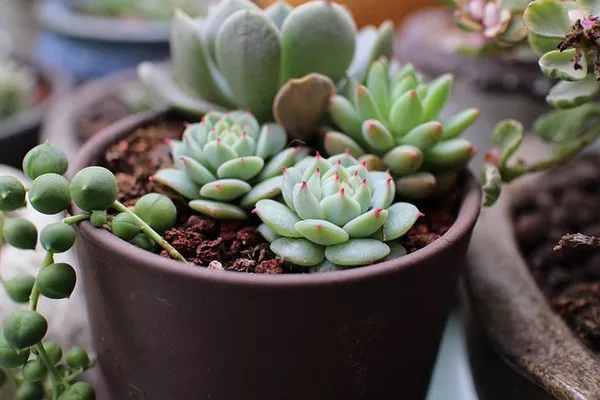As the summer sun intensifies, so does the need for proper care of your beloved succulents. These hardy plants, known for their ability to thrive in arid conditions, still require attention and maintenance to flourish during the warmer months. Whether you’re a seasoned succulent enthusiast or a newcomer to the world of these resilient plants, following these essential tips will help ensure your succulents stay healthy, vibrant, and thriving throughout the summer season.
1. Understand Summer Succulent Needs
Before diving into care routines, it’s crucial to understand the unique needs of succulents during the summer. Succulents are adapted to thrive in dry, arid conditions, but they are not immune to the challenges posed by extreme heat and intense sunlight. During the summer months, succulents may require more frequent watering, protection from scorching afternoon sun, and adequate ventilation to prevent issues such as sunburn and root rot.
2. Provide Adequate Sunlight
While succulents love sunlight, excessive heat and direct exposure to intense sunlight can be detrimental to their health. During the summer, it’s best to provide succulents with bright, indirect sunlight for several hours a day, especially during the morning hours when the sun is less intense. Placing succulents near east-facing windows or providing them with filtered sunlight outdoors can help prevent sunburn and leaf damage.
3. Monitor Watering Closely
Proper watering is essential for the health of succulents, especially during the summer when evaporation rates are higher. However, it’s crucial to strike the right balance and avoid overwatering, which can lead to root rot and other issues. Instead, water succulents deeply but infrequently, allowing the soil to dry out completely between waterings. A good rule of thumb is to water succulents when the top inch of soil feels dry to the touch. Additionally, consider using a moisture meter to accurately gauge soil moisture levels and prevent overwatering.
4. Use Well-Draining Soil
Succulents thrive in well-draining soil that allows excess water to flow freely away from the roots. During the summer months, using a well-draining potting mix specifically formulated for succulents and cacti can help prevent waterlogged soil and root rot. Avoid using heavy, moisture-retentive soils or containers without drainage holes, as they can trap water and lead to fungal diseases and other problems.
5. Implement Proper Ventilation
Good air circulation is essential for preventing fungal diseases and promoting healthy growth in succulents. During the summer, ensure that indoor succulents receive adequate airflow by placing them near open windows or using a fan to improve ventilation. For outdoor succulents, avoid overcrowding them in containers or planting beds, as this can inhibit airflow and increase the risk of disease.
6. Protect from Extreme Heat
While succulents are well-adapted to withstand high temperatures, extreme heat waves can still pose a threat to their health. During periods of intense heat, provide shade or shelter for outdoor succulents to protect them from scorching sun exposure. You can use shade cloth, umbrellas, or temporary structures to create shade and reduce the risk of sunburn and heat stress.
7. Watch for Pests and Diseases
Summer warmth can also bring an increase in pest activity, such as aphids, mealybugs, and spider mites, which can damage succulents if left unchecked. Regularly inspect your succulents for signs of pests, including discolored or distorted leaves, sticky residue, or webbing. If pests are detected, treat affected plants promptly with insecticidal soap or neem oil, and consider isolating heavily infested plants to prevent the spread of pests to other succulents.
8. Avoid Repotting During Summer
While repotting is an essential aspect of succulent care, it’s best to avoid repotting during the summer months, especially when temperatures are at their peak. Repotting can stress succulents and disrupt their root systems, making them more vulnerable to heat stress and other issues. Instead, wait until the cooler months of spring or fall to repot succulents, when they are better able to recover from the transplanting process.
9. Provide Adequate Hydration
In addition to regular watering, succulents may benefit from occasional misting or hydration during hot summer days, especially if they are grown outdoors or subjected to dry, arid conditions. Use a fine mist sprayer to lightly mist the leaves of succulents, taking care to avoid wetting the soil excessively. Misting can help increase humidity levels around the plants and provide relief from the heat without overwatering.
10. Observe and Adjust
Above all, pay close attention to your succulents and be prepared to adjust your care routine as needed based on their individual needs and environmental conditions. Monitor them regularly for signs of stress, such as wilting, discoloration, or leaf drop, and take appropriate action to address any issues promptly. By staying vigilant and responsive to your succulents’ needs, you can help them thrive and flourish throughout the summer months and beyond.
Conclusion
In conclusion, caring for succulents during the summer requires a combination of proper watering, sunlight, ventilation, and protection from extreme heat. By understanding their unique needs and implementing these essential tips, you can enjoy healthy, vibrant succulents that bring beauty and joy to your home or garden year-round. With a little attention and care, your succulents will reward you with their resilience and beauty for seasons to come.


